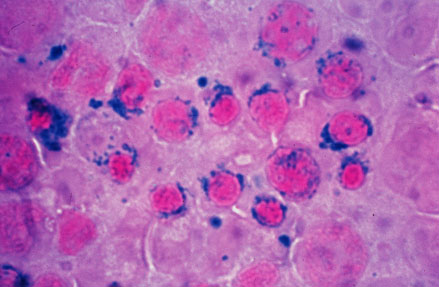Sideroblastic anemia: Difference between revisions
m (Robot: Automated text replacement (-{{SIB}} +, -{{EH}} +, -{{EJ}} +, -{{Editor Help}} +, -{{Editor Join}} +)) |
No edit summary |
||
| Line 1: | Line 1: | ||
__NOTOC__ | |||
{{Infobox_Disease | | {{Infobox_Disease | | ||
Name = {{PAGENAME}} | | Name = {{PAGENAME}} | | ||
| Line 11: | Line 12: | ||
MeshID = D000756 | | MeshID = D000756 | | ||
}} | }} | ||
{{ | {{Sideroblastic anemia}} | ||
{{CMG}} | {{CMG}} | ||
==Overview== | ==Overview== | ||
Revision as of 17:00, 21 September 2012
| Sideroblastic anemia | |
 | |
|---|---|
| Sideroblastic (microcytic) anemia | |
| ICD-10 | D64.0-D64.3 |
| ICD-9 | 285.0 |
| DiseasesDB | 12110 |
| MeSH | D000756 |
|
Sideroblastic anemia Microchapters |
|
Diagnosis |
|---|
|
Treatment |
|
Case Studies |
|
Sideroblastic anemia On the Web |
|
American Roentgen Ray Society Images of Sideroblastic anemia |
Editor-In-Chief: C. Michael Gibson, M.S., M.D. [1]
Overview
Sideroblastic anemia is caused by the abnormal production of red blood cells as part of myelodysplastic syndrome, which can evolve into hematological malignancies (especially acute myelogenous leukemia). Thus, the body has iron available, but cannot incorporate it into hemoglobin.
Causes
The common feature of these causes is a failure to completely form heme - whose biosynthesis takes place partly in the mitochondrion. This leads to deposits of iron in the mitochondria that form a ring around the nucleus of the developing red blood cell. Sometimes the disorder represents a stage in evolution of a generalized bone marrow disorder that may ultimately terminate in acute leukemia.
- Toxins: lead or zinc poisoning
- Drug-induced: ethanol, isoniazid, chloramphenicol, cycloserine
- Nutritional: pyridoxine or copper deficiency
- Genetic: ALA synthase deficiency (X-linked)
Diagnosis
Ringed sideroblasts are seen in the bone marrow.
Laboratory findings
- Increased ferritin levels
- Decreased total iron-binding capacity
- Hematocrit of about 20-30%
- Serum Iron: High
- High transferrin saturation
- The mean corpuscular volume or MCV is usually normal or slightly increased; although it may occasionally be low, leading to confusion with iron deficiency.[2]
- With lead poisoning, see coarse basophilic stippling of red blood cells on peripheral blood smear
- Specific test: Prussian Blue stain of RBC in marrow. Shows ringed sideroblasts.
Treatment
Occasionally, the anemia is so severe that support with transfusion is required. These patients usually do not respond to erythropoietin therapy.[3]Some cases have been reported that the anemia is reversed or heme level is improved through use of moderate to high doses of Pyrodoxine (Vitamin B6.) In severe cases of SBA Bone Marrow Transplant is also an option with limited information about the success rate. Some cases are listed on MedLine and various other medical cites.